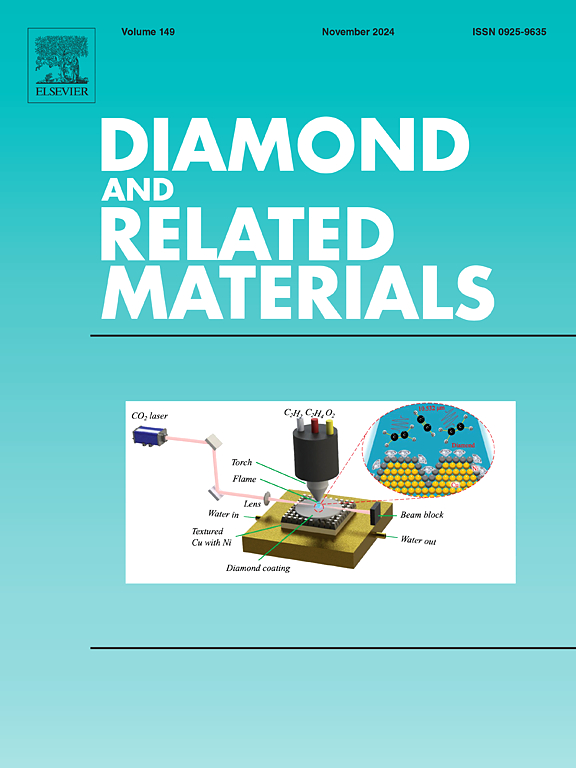利用Kullback-Leibler散度定量分析CVD金刚石成核均匀性
IF 4.3
3区 材料科学
Q2 MATERIALS SCIENCE, COATINGS & FILMS
引用次数: 0
摘要
化学气相沉积(CVD)金刚石在多个领域获得了广泛的应用,但评估成核均匀性的有效量化方法有限。这一限制导致在评估成核过程和模式时模糊不清,潜在地阻碍了更高质量和更大面积钻石的制备。为了解决这一问题,本研究利用人工智能中的基本算法Kullback-Leibler (K-L)散度,建立了一种新的量化算法。该算法将钻石在衬底上的空间分布映射为二维平面上的概率分布,并从均匀分布计算其K-L散度。对不同预处理条件下硅基CVD金刚石核的对比分析表明,我们的定量算法在可靠性、有效性和鲁棒性方面优于成核密度和方差等传统算法。此外,该算法不仅提高了金刚石成核质量的评价,而且在涉及颗粒分布的研究中具有广阔的潜力。本文章由计算机程序翻译,如有差异,请以英文原文为准。

Quantitative analysis of the uniformity of CVD diamond nucleation via Kullback-Leibler divergence
Chemical vapor deposition (CVD) diamonds are gaining traction in multiple sectors, yet effective quantization methods for evaluating nucleation uniformity have been limited. This limitation results in obscure when evaluating nucleation processes and patterns, potentially impeding the preparation of higher quality and larger area diamonds. To address this issue, this study leverages the Kullback-Leibler (K-L) divergence, a fundamental algorithm in artificial intelligence, to establish a novel quantification algorithm. The algorithm maps the space distribution of diamonds on the substrate to a probability distribution on a two-dimensional plane and calculates its K-L divergence from a uniform distribution. Comparative analyses of CVD diamond nuclei on silicon substrates with various pre-treatments reveal that our quantitative algorithm outperforms traditional algorithms like nucleation density and variance in terms of reliability, validity, and robustness. Additionally, this novel algorithm not only enhances the assessment of diamond nucleation quality but also holds broad potential for research involving particle distribution.
求助全文
通过发布文献求助,成功后即可免费获取论文全文。
去求助
来源期刊

Diamond and Related Materials
工程技术-材料科学:综合
CiteScore
6.00
自引率
14.60%
发文量
702
审稿时长
2.1 months
期刊介绍:
DRM is a leading international journal that publishes new fundamental and applied research on all forms of diamond, the integration of diamond with other advanced materials and development of technologies exploiting diamond. The synthesis, characterization and processing of single crystal diamond, polycrystalline films, nanodiamond powders and heterostructures with other advanced materials are encouraged topics for technical and review articles. In addition to diamond, the journal publishes manuscripts on the synthesis, characterization and application of other related materials including diamond-like carbons, carbon nanotubes, graphene, and boron and carbon nitrides. Articles are sought on the chemical functionalization of diamond and related materials as well as their use in electrochemistry, energy storage and conversion, chemical and biological sensing, imaging, thermal management, photonic and quantum applications, electron emission and electronic devices.
The International Conference on Diamond and Carbon Materials has evolved into the largest and most well attended forum in the field of diamond, providing a forum to showcase the latest results in the science and technology of diamond and other carbon materials such as carbon nanotubes, graphene, and diamond-like carbon. Run annually in association with Diamond and Related Materials the conference provides junior and established researchers the opportunity to exchange the latest results ranging from fundamental physical and chemical concepts to applied research focusing on the next generation carbon-based devices.
 求助内容:
求助内容: 应助结果提醒方式:
应助结果提醒方式:


